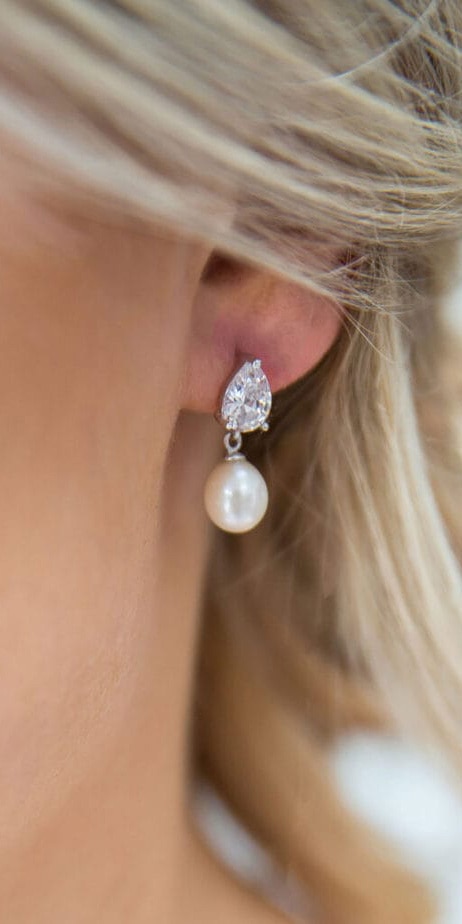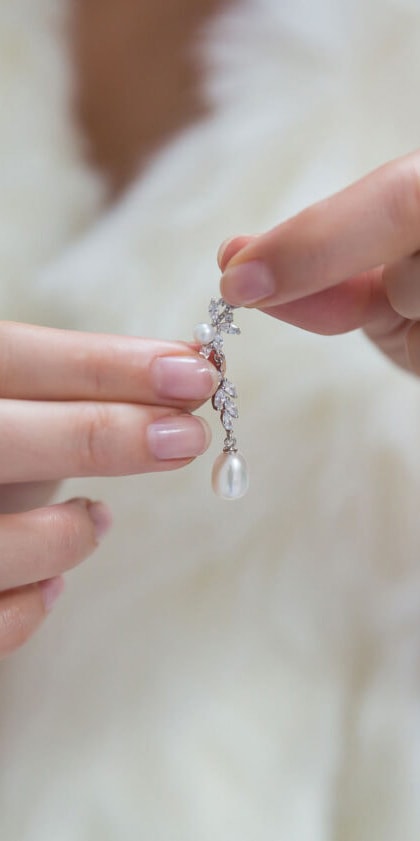Pearl birthstone jewellery
“The pearl is the queen of gems and the gem of queens” Grace Kelly.
Shimmering spheres of perfection, pearls make a fabulous birthday gift for June birthdays as the pearl is the June birthstone.
“The pearl is the queen of gems and the gem of queens” Grace Kelly.
Shimmering spheres of perfection, pearls make a fabulous birthday gift for June birthdays as the pearl is the June birthstone.
Coco Chanel, Audrey Hepburn, Grace Kelly and Jackie Kennedy each had their own particular style which they radiated with effortless grace and flair, but one thing they all shared was their love for beautiful pearls. Timeless, chic and elegant, pearls have stood the test of time.
Pearls are classified as 2.5 on the MOHs scale so they are soft and can be easily scratched. This means your pearl jewellery should always be stored separately from harder gemstones. Ideally, pearl jewellery should be kept in cloth bags to keep them safe from possible scratching. Acidic substances such as perfume can dull a pearl’s lustre, so it is advisable never to spray anything directly onto them and wipe the pearls before putting them away.
Ranging from classic freshwater to unique baroque pieces, our pearl collection is perfect for bridal jewellery but also for such occasions as anniversaries, birthdays or for everyday wear.
As well as the June birthstone, pearls are traditionally given as a thirtieth wedding anniversary gift.
In more recent times, another fascinating story was the sale of Morton Plant’s home at 653 Fifth Avenue to Pierre Cartier for a double strand of enormous, natural South Sea pearls. The smaller strand is made up of 55 pearls and the larger of 73. At the time, the two strands were worth $1 million.
Kokichi Mikimoto, the son of a Japanese noodle maker, created the world’s first cultured pearl in 1893 by manually introducing an irritant into an oyster to stimulate it to form a pearl. The introduction of cultured pearls in the early 1900s caused the value of natural pearls to plummet. By 1935, there were 350 pearl farms in Japan, producing 10 million cultured pearls a year, although Mikimoto had to keep defending himself against accusations that his pearls were not ‘real’. However, the cultivated pearls had the exact same properties as those formed in deep sea beds, the only difference was that they had a helping hand at getting the natural process started.
Today, most pearls available are cultured pearls and natural pearls are counted among the rarest of gems. This rarity is reflected in the prices they can command – in 2011, Christie’s New York auctioned Elizabeth Taylor’s famous La Peregrina 16th century pearl necklace for US$11.8 million!


One of the best loved gems of all time, pearls are the only gems to be produced by a living creature. Natural pearls form around a microscopic irritant (eg a piece of shell or parasite) in the bodies of certain molluscs. The irritant becomes the nucleus and causes the mollusc to secrete a crystalline substance called nacre as a defence mechanism. This builds up around the irritant in thousands of layers until a pearl is formed, a process that can take anywhere between one and four years to develop fully. Cultured pearls are formed through exactly the same process, the only difference being that the irritant is implanted in the oyster.
Pearls can be found, or cultivated, in freshwater or saltwater and there are several different types of pearls depending on what mollusc they originate from. Cultured freshwater pearls are produced mainly in China’s lakes and rivers, harvested from freshwater mussels. Due to their abundance, they are more affordable than the saltwater varieties. Saltwater pearls include the Akoya (from Japan’s saltwater Akoya oysters), Tahitian and South Sea pearls from Australia, Indonesia and the Philippines. South Sea pearls are the largest of all and come in white, cream or golden hues with sizes ranging from 9mm to 20mm. A Tahitian pearl is also known as a black pearl, although its colour spectrum also includes such colours as charcoal grey, blue, peacock green and purple.
‘Baroque’ pearls are non-symmetrical and these irregular shapes are more common in freshwater pearls. While perfectly round pearls have traditionally been the most revered, baroque South Sea or Tahitian pearls are now often used in unique, contemporary jewellery.
Then there are pearls produced by molluscs such as the conch and abalone. These cannot be cultured and so are incredibly rare. Even a pea sized conch pearl can command about US$120,000.
Fun fact – you can tell the difference between a natural/cultured pearl and a synthetic man-made pearl by rubbing it against your teeth. If it is perfectly smooth, it’s not real.